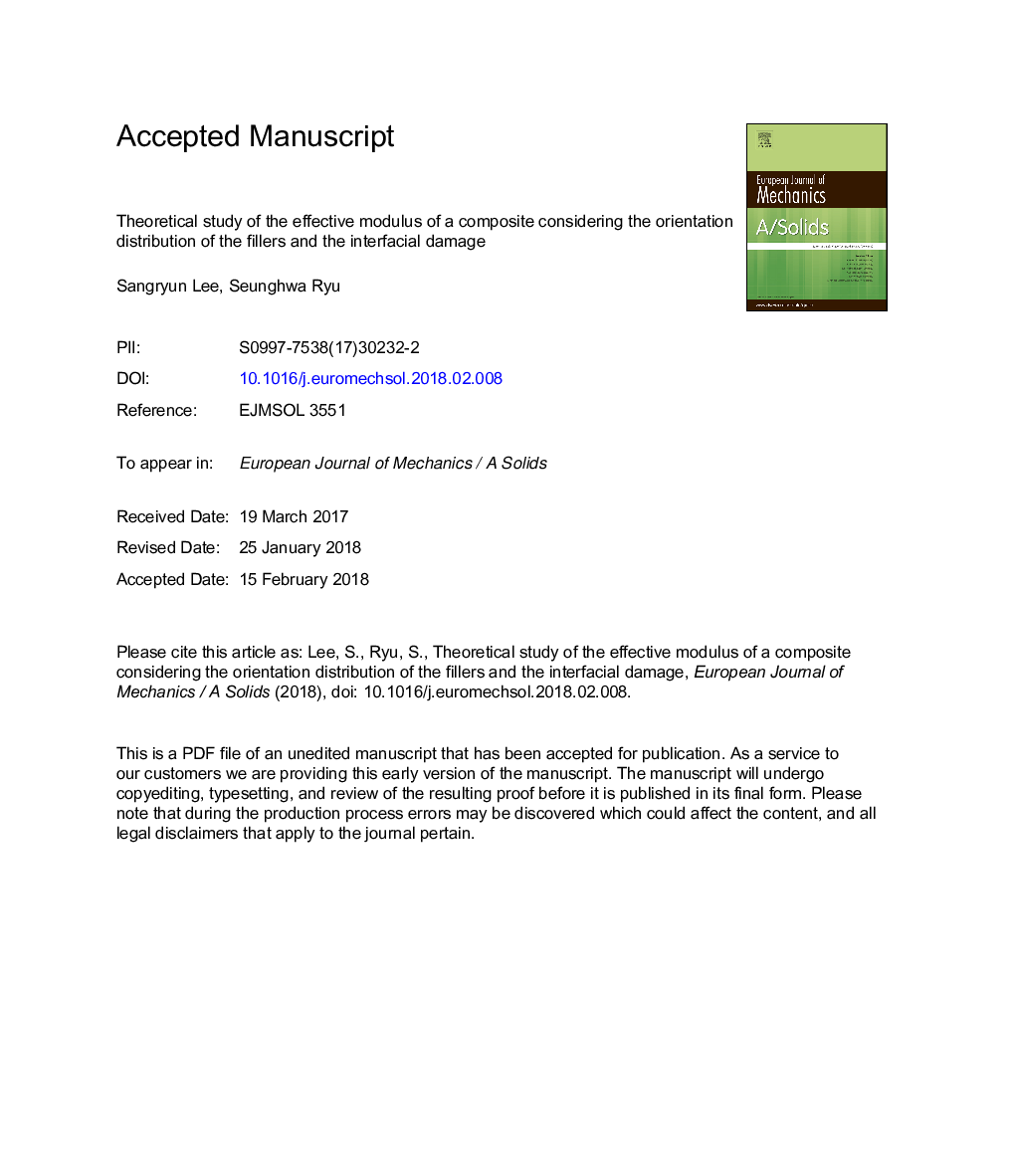| Article ID | Journal | Published Year | Pages | File Type |
|---|---|---|---|---|
| 7170050 | European Journal of Mechanics - A/Solids | 2018 | 35 Pages |
Abstract
In the manufacturing process of a filler-reinforced composite, the fillers are partially aligned due to the shear flow in the drawing stage. Besides, various imperfections form at the interface between the matrix and the fillers, leading to debonding and slip under mechanical loading. There have been numerous micromechanics studies to predict effective moduli of the composites in the presence of partial alignment of fillers and interface imperfections. Here, we present an improved theory that overcomes two limitations in the existing micromechanics based approaches. First, we find that the interface damage tensor for axisymmetric ellipsoidal inhomogeneity developed to model the interfacial damage leads to the prediction of infinite or negative effective moduli. We show that these anomalies can be eliminated if correctly derived damage tensor is used. Second, we reveal that the previous theory on the effective moduli with axisymmetric filler orientation distribution fails because longitudinal and transverse moduli predictions do not converge in the limit of random orientation distribution. With appropriate corrections, we derive analytic expressions for the orientation average of arbitrary transversely isotropic 4th order tensor under general axisymmetric orientation distribution. We apply the improved method to compute the effective moduli of a polymer-carbon nanotube composite with non-uniform filler orientation and interface damage.
Related Topics
Physical Sciences and Engineering
Engineering
Mechanical Engineering
Authors
Sangryun Lee, Seunghwa Ryu,
